It’s been a month since I attended the 2015 Kneading Conference in Maine, but the memories are still swirling around in my head. It was a great experience in more ways than one.
I decided to drive to Maine rather than fly so that my youngest son could go with me. He was the navigator. Along the way, we met neat people and learned new things about bread-baking and navigating around cities to avoid toll roads. We traveled the more expensive route on the way up (i.e. more tolls) mainly because we wanted to go through some of the bigger cities; however on the way home, we found a more scenic route.
On the way to Maine
We took our time during the first leg of the trip and spent several days traveling. One of the historical places we visited was the Statue of Liberty and Ellis Island. It was a beautiful sunny day. Later that evening, we enjoyed a delicious pizza in Rochelle, New York.

On the way back home, we had to speed things up a bit to make sure I was back at work on time, but we did take the opportunity to stop in Portland, ME to eat lunch and enjoy a stroll near the water. We made it back to Georgia just in time to enjoy the early morning rush hour in Atlanta. Then we slept.

Kneading Conference
This trip was about more than attending the grain conference. You never know who you might meet or what you might experience when you get out of your box and away from the computer. I had been spending way too much time at my desk at work and at home, and even too much time in the kitchen so I decided to do something about it. I wouldn’t call this a vacation so much as a getaway from it all to gain perspective and enjoy some quality time with my son and networking with fellow bread heads.
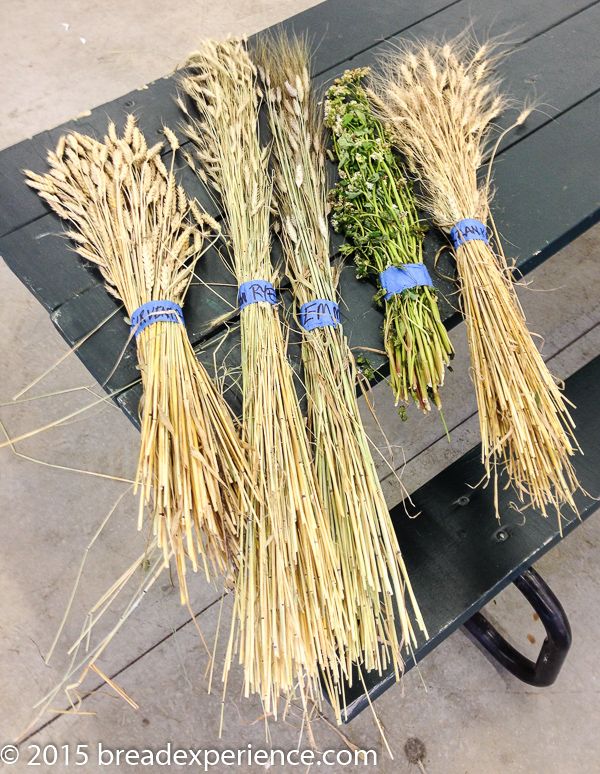
Day 1: Thursday July 30th
Morning Keynote Address with Peter Reinhart
The workshop began on Thursday. Peter Reinhart gave the opening address. He is one of my bread-baking mentors and I always enjoy hearing and reading what he has to say about bread. His presentation was about how “Bread has a Story to Tell.” I was totally psyched when I learned what he would be talking about because I’m always saying that bread has a story.
He surmised that the mission of bread is to evoke the full potential of flavor trapped in the grain. He also spoke about the transformation of bread. It starts with the wheat; then it is transformed into flour; then the living dough is transformed into a loaf of bread. He described it as “leaven giving up its life to become a loaf of bread. ” How cool is that!
Morning Workshop: Building an Earthen Oven
After the keynote, we broke off into smaller workshops. I went to the session on building Earthen Oven with Stu Silverstein. I assisted with building an earthen oven for the first half of the day. There were several of us working on it and I helped shape the dome and played in the clay stomping it with my feet. After lunch, I decided to attend a different workshop.
Here is the finished oven. I helped build the foundation, and part of the dome, but the rest of the team finished everything else. It was neat to see the final product and to see it fired up. I bought Stu’s book Bread Earth and Fire so I can build my own earthen oven soon (I hope) with help from a friend.
Afternoon Workshop: Artisan Techniques for Wood-Fired Baking
In the afternoon, I attended Artisan Techniques for Wood-Fired Baking with Richard Miscovich. He talked about the entire process from mixing a hearth dough by hand to baking it in a wood-fired oven. It was an interesting workshop. I’m ever hopeful I will actually have a wood-fired oven of some sort to practice with some day.
Richard walked us through the process of making a 69% Hydrated Pain au Levain. I’m familiar with this bread because we made a version of it in the Artisan Bread Bakers FB Group. My version was made with KAMUT so it was actually over 70% hydrated due to KAMUT’s high absorption rate. Richard discussed a couple of different versions of this bread – rosemary and roasted onion. In fact, he roasted some onions in the wood-fired oven. When they came out, they were all black on the outside, but the inside, deliciousness. We had some with sliced bread and sprinkled with crushed pink peppercorns.
Richard also has a book called From the Wood-Fired Oven: New and Traditional Techniques for Cooking and Baking with Fire
Day 2: Friday, July 31st
Morning Workshop: The Grain Exchange: A Baker’s Experiment in Flour Substitution
The next morning, I attended The Grain Exchange: A Baker’s Experiment in Flour Substitution taught by Ciril Hitz. We learned how to make a whole grain spelt bread that reminds me of a dense whole grain rye bread, but with spelt.
When asked how you introduce a new grain, he said, “just do it!” I loved that! He also said you need to make a bunch of loaves in order to understand the variables. He used an ice cream scoop to scoop the dough into small loaf pans. He said using smaller loaf pans makes the breads more affordable, but also requires less baking time.
We also learned about and sampled another bread, a ciabatta made with khorasan wheat. I love working with khorasan wheat so I’m going to try his technique for testing different batches using varying percentages of khorasan/white flour. Yum! I can still remember the taste.
Another book I need to check out is Ciril’s book Baking Artisan Bread: 10 Expert Formulas for Baking Better Bread at Home
Afternoon Workshop: Integrating Spelt into Your Baking Repertoire
In the afternoon, I attended the workshop, Integrating Spelt into Your Baking Repertoire. I already use spelt but I was curious to learn more about it. We learned some tips and pitfalls about growing spelt and about the baking qualities of the grain.
Spelt is more water soluble than regular wheat so the hydration needs to be much lower. The mixing time should also be done at a lower speed or by hand. I already knew that, but what I didn’t know is that the dough should be slightly under proofed. You should let it proof until it almost looks perfect. If it looks perfect, it’s over proofed. Who knew?
Spelt makes a very delicate dough and has a higher ratio of gliaden to glutenin as opposed to wheat which has a higher ratio of glutinen to gliadin. Another interesting tidbit is if you have a low protein wheat or poor quality wheat, you can add some spelt to help strengthen it.
These breads were made with spelt and some with a heritage Maine grain.
At the end of the conference, we enjoyed cookies and milk courtesy of King Arthur Flour. All in all, it was a great time.
I enjoyed the workshops but the networking with bakers from all walks of life was just as good. I met some home bakers and bakers that run micro bakeries and small bakeries. I plan to showcase some of these bakers in the coming months so stay tuned for more info.
The third day of the conference was the Artisan Bread Fair. On Saturday, I met some other artisan bakers and grain growers at the Bread Festival so look for that post soon.
For now, I’ll leave you with my take away from the keynote address by Peter Reinhart. Next time you bake a loaf of bread see if you can evoke the full potential of flavor trapped in the grain. And watch as the leaven gives up its life to become a loaf of bread.
Happy Baking!
Cathy
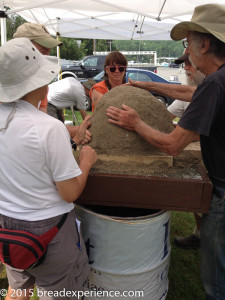
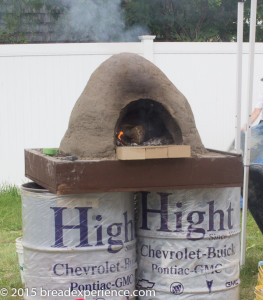
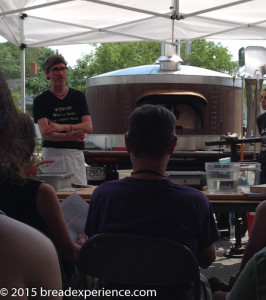
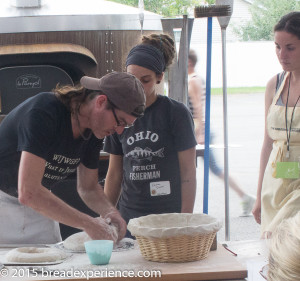
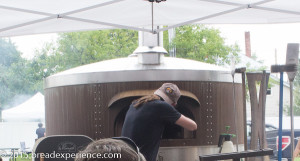
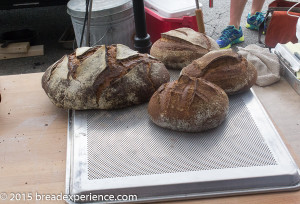
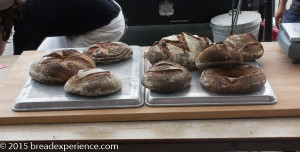
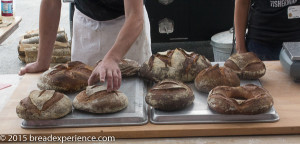
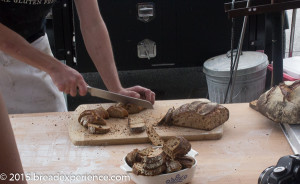
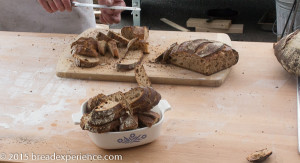
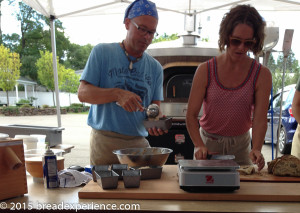
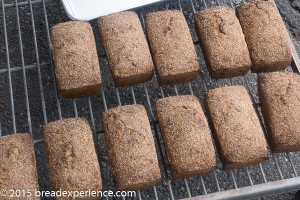
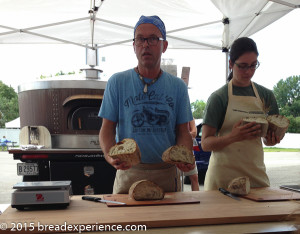
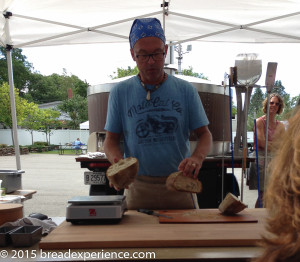
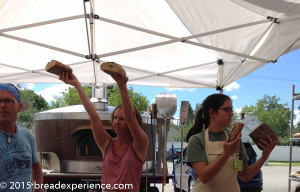
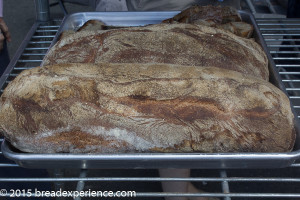
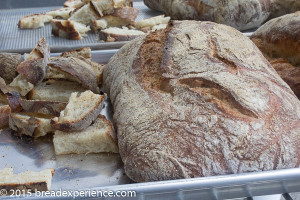
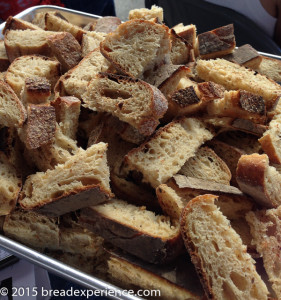
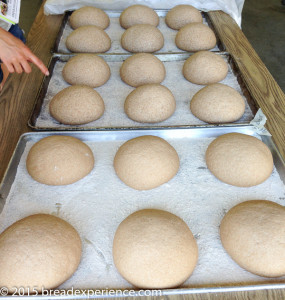
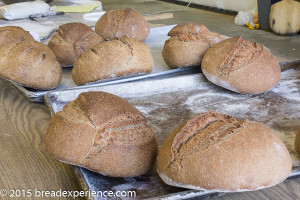
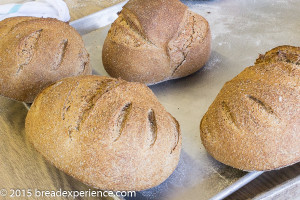
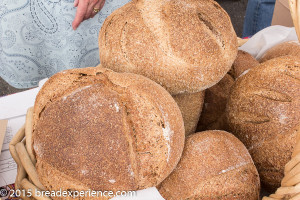
Leave a Reply